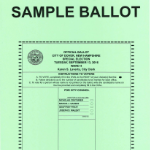
One of the essential problems with the way the United States does elections is that it inevitably results in just two political parties.
Inevitably.
Electoral systems that use single-choice ballots, where the voter marks a single choice from the field of candidates, end with only two large coalition parties being relevant.
This is because any Party that’s not even theoretically competitive in the general election can’t attract support away from a Party that is, since what would be the point of that?
(Some people will still occasionally support a third-party or third-party candidate, of course; I have personally voted for Ralph Nader, for example. But I knew he wouldn’t win.)
And that causes a whole host of other problems.
In a two-party environment, especially one with rampant gerrymandering like the United States (which is largely also a result of the two-party environment), this shifts all of the real decision-making to the primary election.
The problem with that, of course, is that primaries are single-party and the voters in primaries tend to be the most engaged and/or extreme of each Party’s voters.
So you’re not only stuck with two parties, but those two parties will shift apart rhetorically while converging in actual policy.
It also reinforces party-loyalty.
This leads to a situation where the Party is more important to a politicians’ decisions than the country, their constituents, or even (once the situation gets really extreme) their actual voters.
Whatever force controls the primary election controls the politicians, who control the country. And in a two-party environment, that force is whoever can effectively deliver the small percentage of voters that are necessary to win in the primaries.
And that really sucks.
Not just because you end up with society split into two camps that hate each other, but also because it means almost no voters’ desires are actually represented in the electoral results.
So, we need way more successful Parties.
There are two things that need to change for that to be possible:
- proportional representation in the legislative branch
- ranked-choice voting in elections with single winners
(I discussed this solution before in Bloc Party: Real Representation In Government and No Spoilers: Ranked Choice Voting.)
In an electoral system with both of those implemented, it’s possible for many parties to thrive and be electorally successful.
This would weaken the power of party-loyalty (since no Party would control enough of the government directly for their loyalists to act with impunity).
And it would make the government more representative of what the voters actually want.
Which is kinda supposed to be the point of a democracy, after all.

3 thoughts on “Third Party Time: Two, Three, Or Many Political Parties”